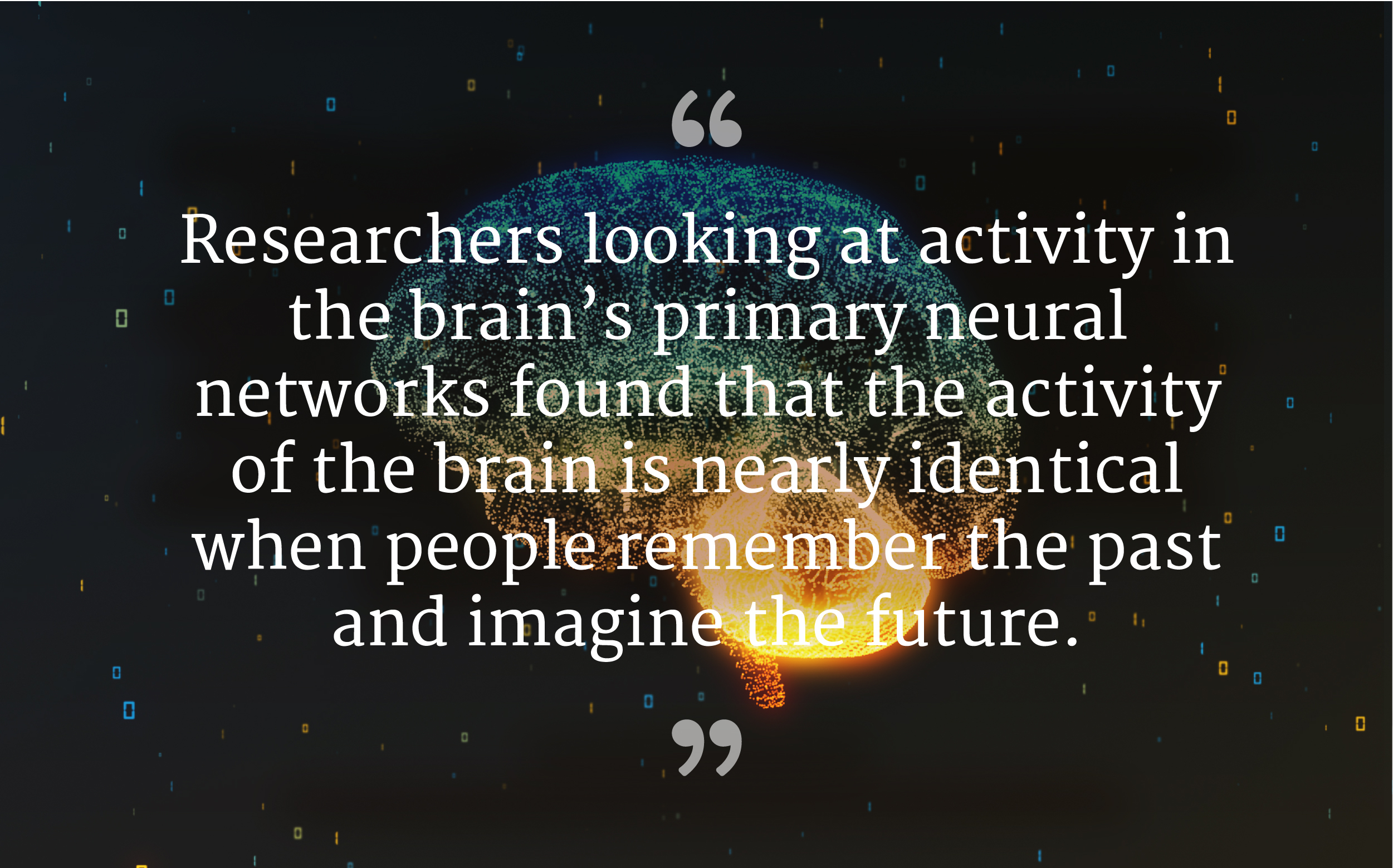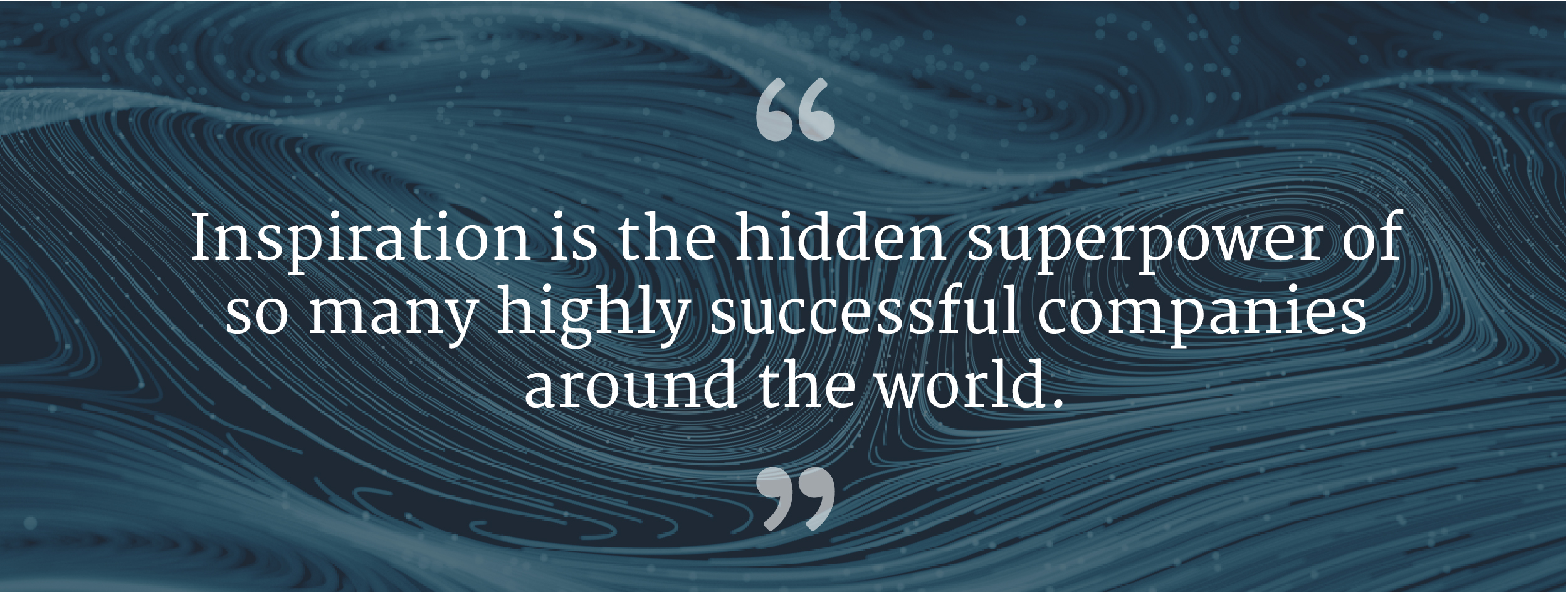For a brand to lead, it must inspire
In previous chapters, we’ve discussed the power of making connections through collaboration: connecting people inside an organization with each other, connecting the views of leadership with the beliefs of employees and connecting the mission of an organization with the beliefs and passions of their audiences. This collaboration is a powerful organizational and marketing force.
But as much as the concept of a collaborative brand is differentiating, it is not enough to simply align people. The real power of a collaborative brand is the opportunity to work together to further a common interest, to solve shared problems, and build on a shared passion, both internally and externally.
And this requires brands to take on an even more critical role: to inspire.

A great example of inspiration was discussed in Chapter 1: Patagonia’s Common Threads. Patagonia didn’t just align people around environmental issues; they put a stake in the ground, created a roadmap and a set of rules by which anyone can participate. But, most importantly, they created a truly inspiring vision. Something anyone can see, feel, and be compelled to act upon.
Through inspiration, Patagonia created a visceral sense of what is possible if everyone comes together around a common vision. It created a movement, a massive online following, and a change in behavior for millions of outdoor enthusiasts.
Inspiring people is not something that comes naturally. Because the truth is, vision is not one of the human animal’s strongest traits. And in particular, it can be the Achilles’ heel of business.
Why? Because when people consider the validity of an idea, they often struggle to picture what the true potential could be. What does good really look like? How is it all going to come together? Will it be successful or an utter failure? It turns out that our natural instinct leans toward the negative.
There are two simple reasons for this. First, the human brain is more prone to negative bias. And secondly, the brain’s vision of the future is limited by what it has experienced in the past.
According to John Cacioppo, a former member of research faculty at Ohio State University, the brain is simply wired with a greater sensitivity toward negative information. It is, in fact, a critical part of our evolutionary defense mechanism, to be more highly aware of threats than opportunities. This bias is so ingrained it can be detected at the earliest stage of the brain’s activities in processing information.
In one of Cacioppo’s studies, he showed people pictures known to arouse positive, negative and neutral feelings, recording electrical activity in the brain’s cerebral cortex that reflects the magnitude of information processing taking place. In each instance, the brain reacted more strongly to stimuli it deems negative.
This is why we almost always focus on the problems rather than solutions. Without some catalyst to help us see beyond the inevitable problems, all we see are the difficulties, and the obstacles. And this quickly sways our judgment of new ideas.
The second thing that stands in the way of seeing the potential of an idea is that most people have a limited capacity to envision things beyond their own experiences. We see the future through the lens of what we have experienced in the past. Brain scans have allowed researchers to determine that many of the same brain structures involved in remembering are the same for forecasting. They found that brain activity is nearly identical when people remember the past and imagine the future.

Our experiences from the past no doubt define how we see the future, which means that creativity and vision are – by our very nature – limited. And to make matters worse, our memories are biased toward remembering the negative experiences of our past, so we often see the flaws rather than the opportunities.
All in all, we struggle to see a bright picture of what is possible. And because of this we often fail to find the motivation to commit ourselves. This is why inspiration is so critical in helping drive change and overcoming our natural tendencies to quit before we see the true potential.
Inspiration is critical to motivation
People are motivated by many factors: fear, money, desire. But, these “responsive” motivators are often transient. Fear and desire are primal responses. They are a reflex. When the stimulus that creates them is removed, the auto response and the endorphins that accompany it fade, and our motivation to act fades right along with it. This isn’t intended to discount the intensity of these feelings, just the fact that the motivation we feel rarely endures.
Lasting motivation comes from ideas that connect to our beliefs and ideologies, that tap into our sense of accomplishment and self worth.

It was well known that Steve Jobs was inspired by John Lennon. He patterned a big part of his life on the best parts of Lennon. He fought the status quo like Lennon, he followed his Buddhist path, he patterned his thinking, rebellion and his actions after Lennon, he even he wore glasses like Lennon. In Lennon, Steve Jobs saw a fully formed, highly successful, highly influential individual that he wanted to become. Through Lennon, he saw exactly what was possible.
According to psychologists Todd M. Thrash and Andrew J. Elliot, there are three core aspects of inspiration: evocation, transcendence, and motivation.
Evocation: Inspiration can happen spontaneously without even looking for it.
People are usually inspired by something, whether it’s an inspiring role model, teacher, or subject matter. Which is all the more reason why we need to constantly create the conditions for inspiration.
Transcendence: Inspiration overcomes our more instinctual limitations.
This often involves a moment of clarity and awareness of new possibilities. This moment of clarity is often vivid, and can take the form of a grand vision, or a “seeing” of something that has not been seen before (but that was probably always there).
Motivation: Inspired people are determined to bring a new idea life.
According to Thrash and Elliot, inspiration combines both being inspired by something and ultimately acting on that inspiration.
Inspiration is a catalyst that evokes a visceral and emotional vision in our minds. It gives vision to our dreams, motivates action, builds consensus and even has the power to create a movement.
How do you capture the power of inspiration within your brand?
In truth, most organizations skip right past inspiration. They move quickly to goals, tactics, and the most efficient way to get things done. The idea of pausing first to open up everyone’s minds, to diverge our thinking before jumping to solutions seems foreign to everything business is based on. Yet inspiration is the hidden superpower of so many highly successful companies around the world. And it is a superpower that you can tap into.
In order to bring some order to the fuzzy concept of inspiration, we at Intrinzic have developed four steps to help companies draw on the power of inspiration and see its full potential to motivate employees, customers and the marketplace. It is a process in the same way business planning is a process and the time invested can be game-changing for a company.
Most of the world’s greatest achievements – and the inspiration that gave them life – occurred when people were trying to solve a problem. So we’ve built our framework around developing inspiration to help solve a problem.
Be honest.
Define the true problem or opportunity. Get to the underlying, often ugly truth of the problem or the toughest obstacle standing between you and success. Don’t get caught up in the symptoms, don’t ignore the hurdles. This is harder than it sounds.
Distill a problem down to its simplest parts.
Don’t look at the problem or opportunity as a whole. Problems are always complex. Opportunities are never easy. Write down words that define critical aspects of the problem or opportunity: causes, effects, potential, outcomes, obstacles, etc. Refine your list of words by prioritizing those that have the biggest impact on the problem.
After looking inward, look outward.
Now, look for brands, organization, individuals or innovators associated with the top five words on your list. Capture strategies, stories, solutions examples from different organizations, and different industries that have experienced or solved the core elements of your problem or created unexpected success.
Look at yourself: Indulge personal passions.
Your own interests in seemingly unrelated areas can inspire valuable connections. Uncover how your have taken on similar challenges in other aspects of your life. You will be shocked at how your interests in sports, music or movies will reveal unexpected patterns that lead to inspiration.
The most important thing is to recognize when following these steps is that any idea, any challenge, any great vision requires inspiration to motivate, build a following, generate momentum and create change. People are quick to react, but rarely sustain their actions unless they are truly inspired.
Inspiration is the single most powerful tool in business and also the most underutilized. So make inspiration part of everything you do. Invest the time and you will reap the rewards.


